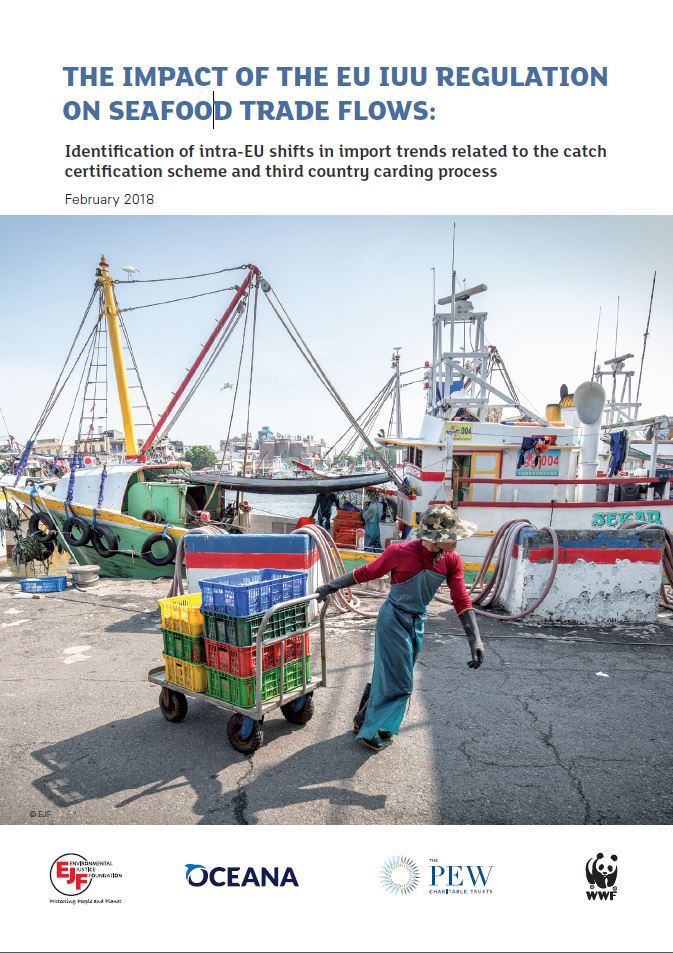Report | February 5, 2018
The impact of the EU IUU Regulation on seafood trade flows
A core aim of the European Union’s (EU) Regulation to end illegal, unreported and unregulated (IUU) fishing – Regulation (EC) No. 1005/2008 – is to prevent, deter and eliminate trade in fisheries products deriving from IUU fishing into the EU. Prior to the adoption of the IUU Regulation in 2008, approximately 500,000 tonnes of illegal fisheries imports were estimated as entering the EU annually, to a value of approximately € 1.1 billion
The IUU Regulation establishes a catch certification scheme, complemented by a procedure to identify third countries as non-cooperating in the fight against IUU fishing (the ‘carding’ process). According to this procedure, countries may be pre-identified (yellow-carded) and, as a last resort, identified (red-carded) by the European Commission for failure to take action against IUU fishing in line with their international flag, coastal, port and/or market State obligations. From the date of the Commission’s decision to red card a third country, the importation of products caught by the carded country’s vessels to the EU is prohibited.
The analysis identified fluctuations in imports of seafood to the EU and related intra-EU trade flows that were potentially linked to the IUU Regulation’s entry into force or the carding process. Trade anomalies, such as random peaks in trade, the emergence of new trading partners, and significant and sudden increases in import volumes, were also observed. Import fluctuations were observed more frequently for certain seafood commodities, including yellowfin tuna and swordfish.
Relatively simple analyses of publicly available trade datasets can assist in identifying weaknesses in import controls, and indicate where non-compliant products may be entering the EU market. Strategic trade monitoring is a low-cost but currently under-used tool that could assist Member States in improving implementation of the IUU Regulation catch certification scheme, especially given the vast number of catch certificates received each year.


